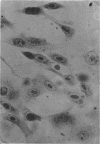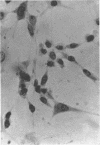Abstract
Fuentes-Marins, R. (Southwest Foundation for Research and Education, San Antonio, Texas), A. R. Rodriguez, S. S. Kalter, A. Hellman, and R. A. Crandell. Isolation of enteroviruses from the “normal” baboon (Papio doguera). J. Bacteriol. 85: 1045–1050. 1963.—In a study designed to determine whether the baboon (Papio doguera) would be suitable for use as a model of human virus infections, the normal enterovirus flora was determined. Five agents were isolated from 101 stool samples: four from the African group and one from the African-African group. None of the stool samples from the Domestic group of animals was found to contain any agents. On the basis of their biological characterizations (animal source, cytopathic effect, plaque formation, and antigenic relationships), the isolates were separated into two groups. Accordingly, prototype strains AA153 and A13 were designated for the African-African and African groups, respectively. These viruses have not been found to be related to any known human viruses. Their relationship to organisms isolated from other animals, especially primates, awaits study. The failure to detect latent viruses in preparations of baboon kidney cell cultures suggests a relatively “clean” animal which may be used with safety in preparation of vaccine for human administration.
Full text
PDF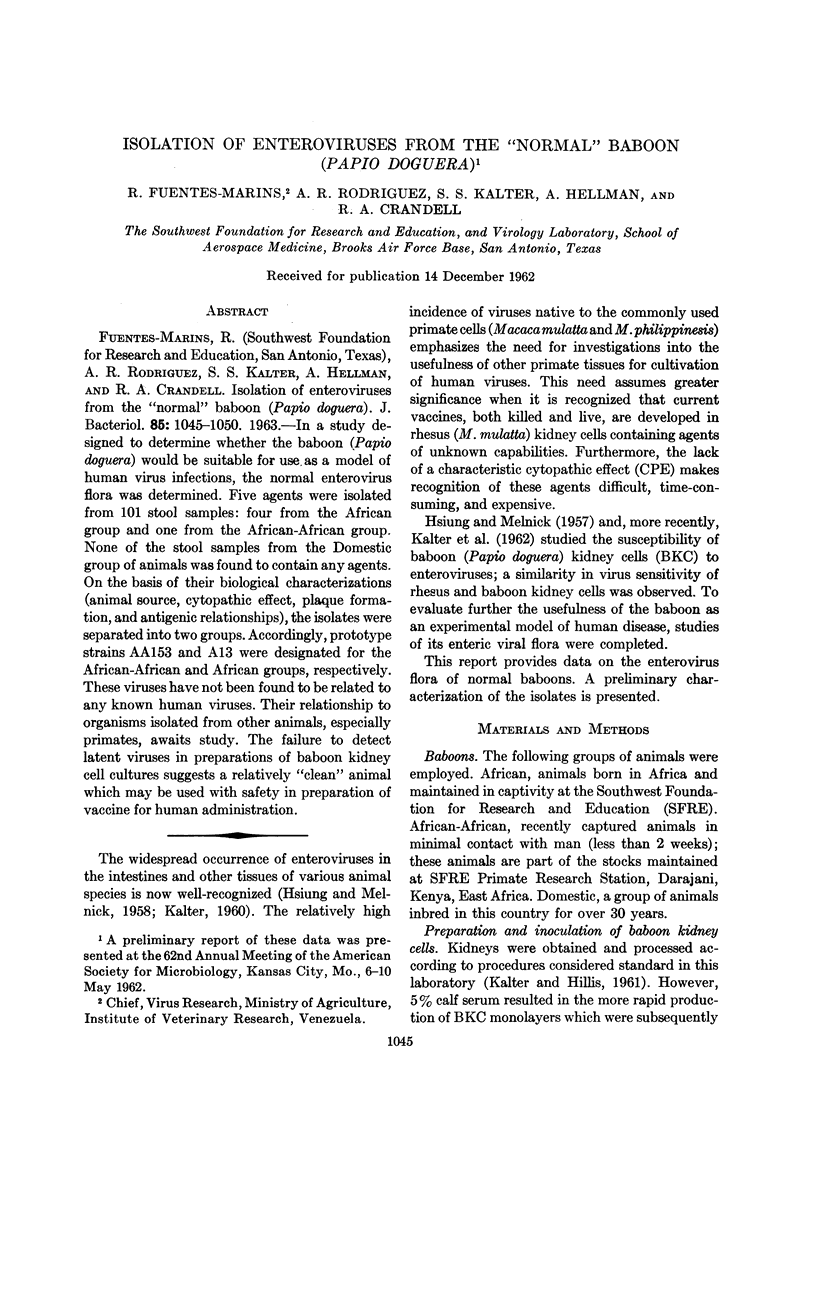
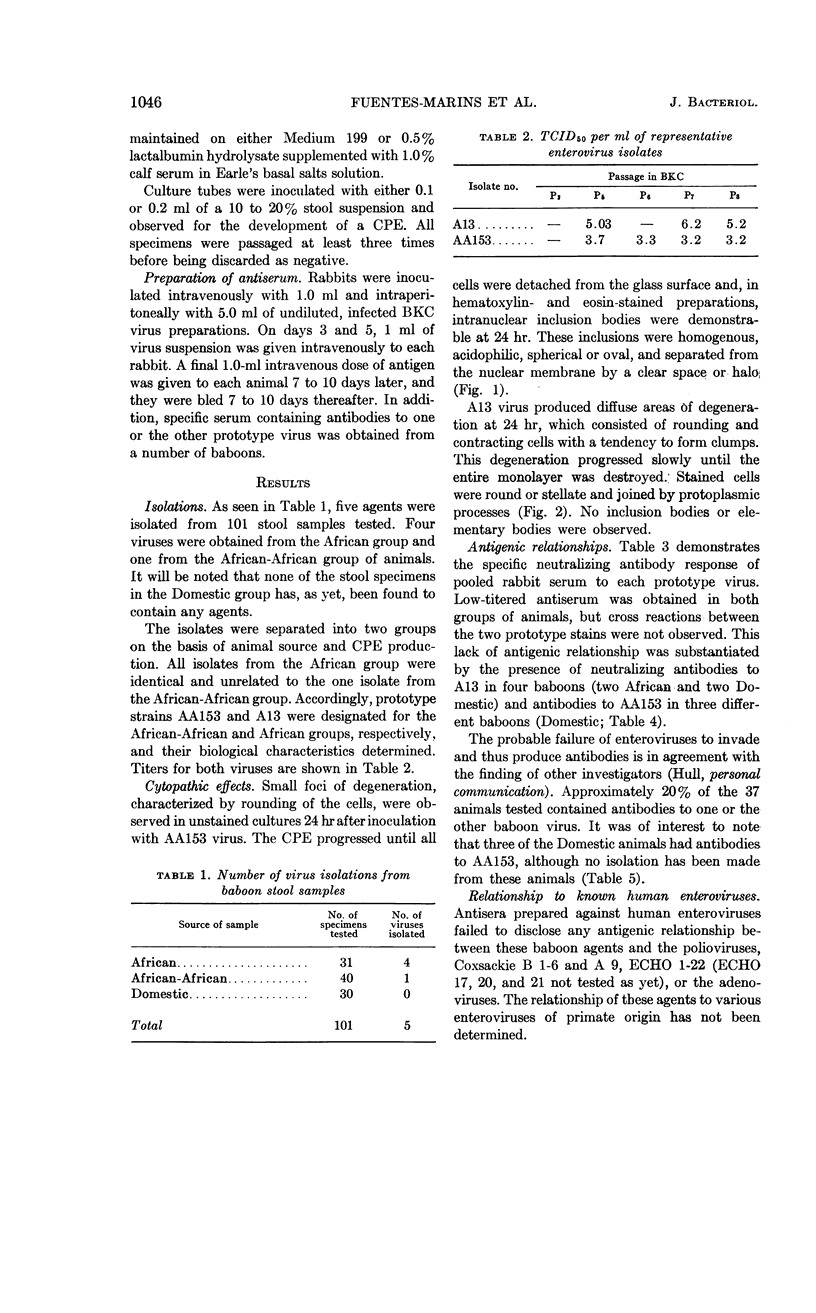
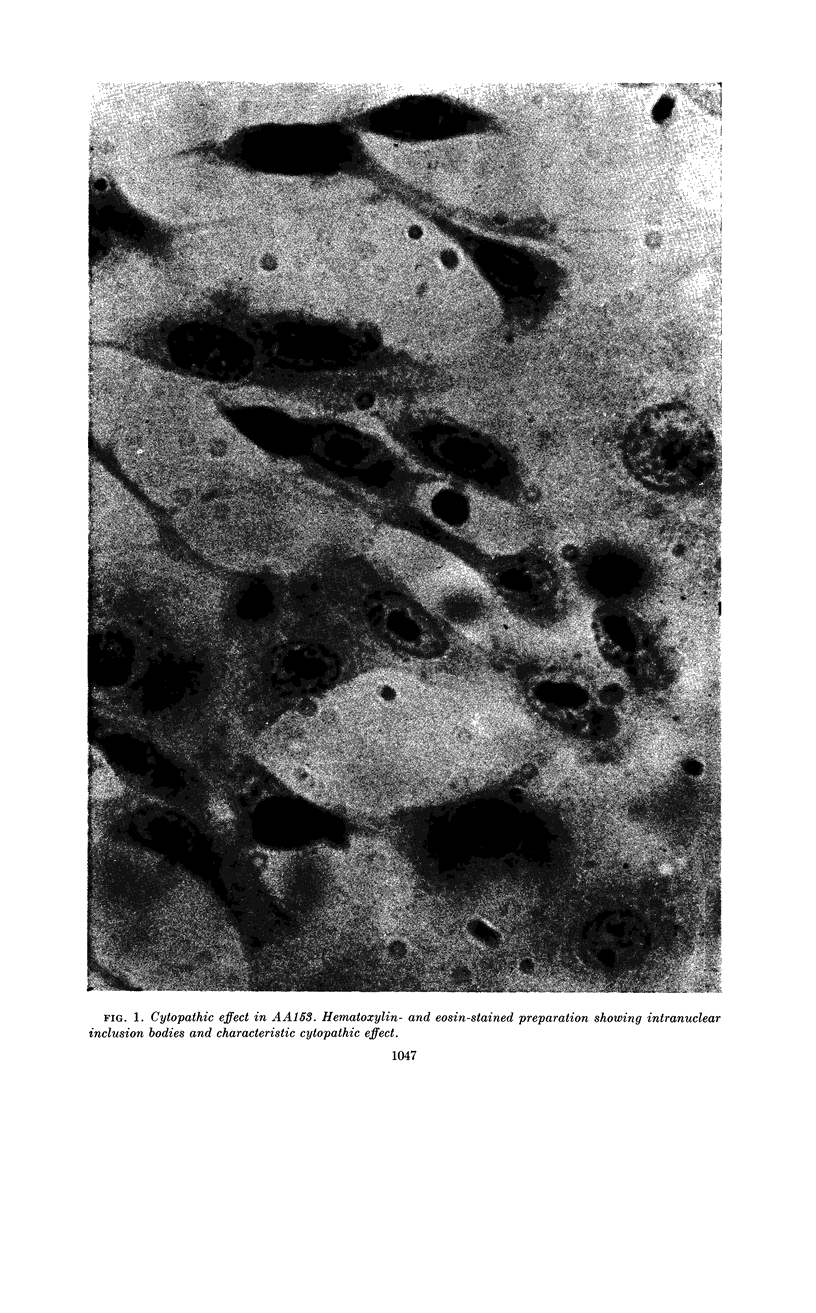
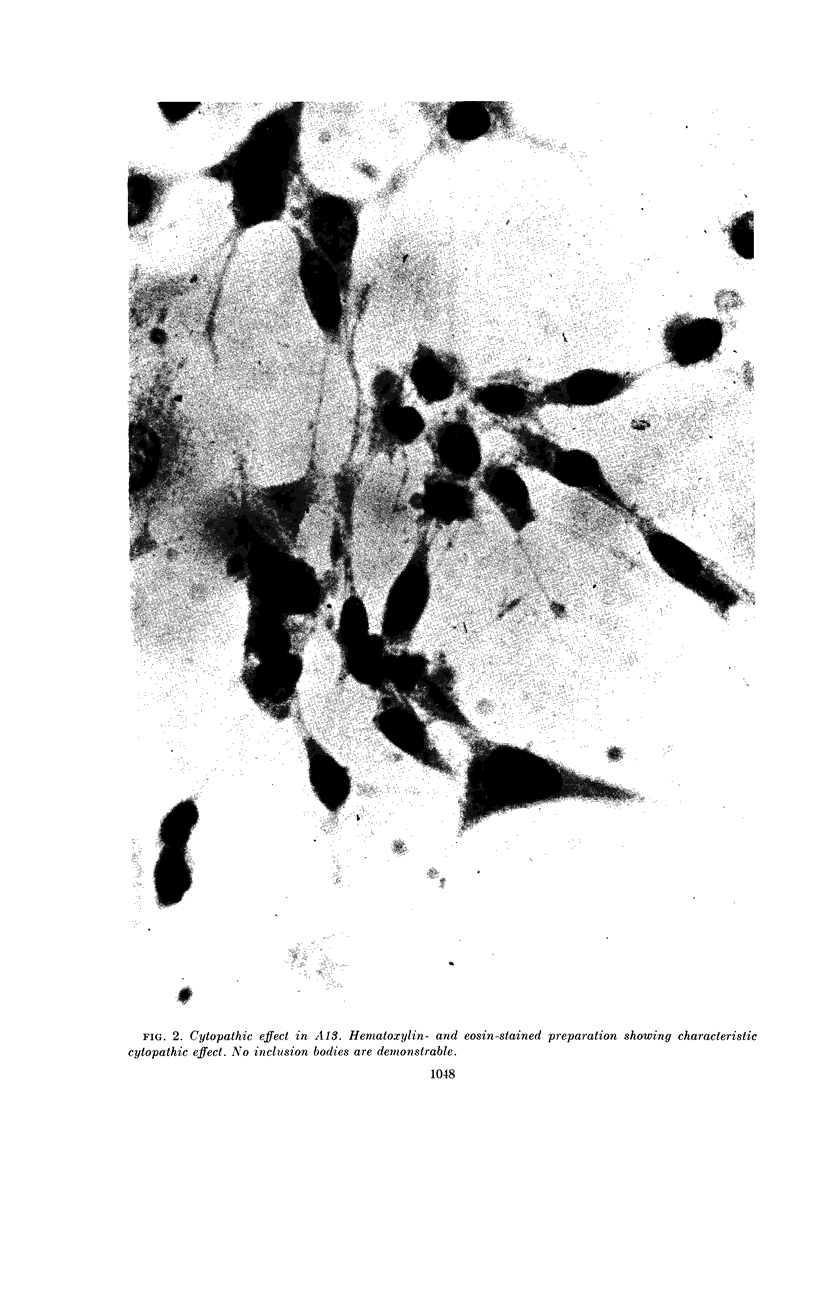

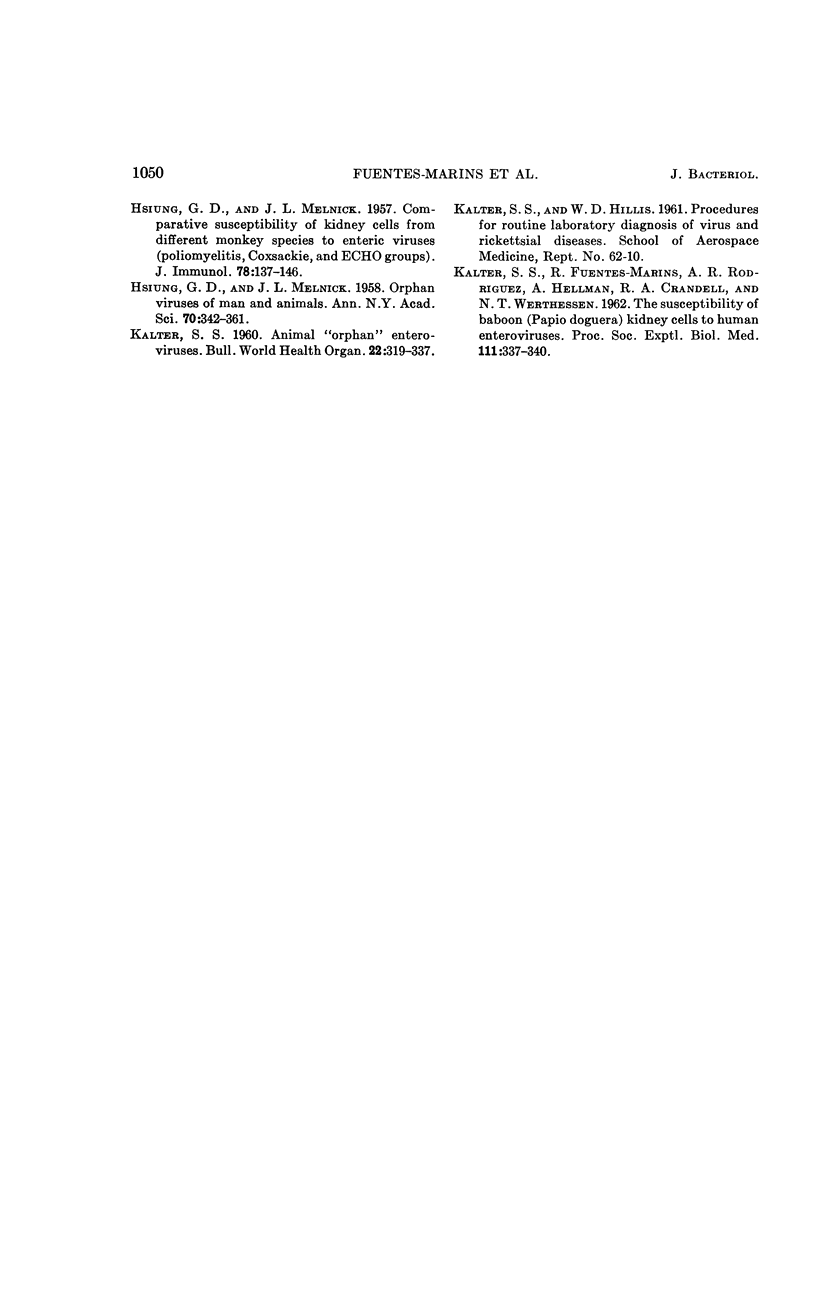
Images in this article
Selected References
These references are in PubMed. This may not be the complete list of references from this article.
- COONEY M. K., McLAREN L. C., BAUER H. A newly-recognized enterovirus, with affinity for primary human amnion cells, isolated from cases of aseptic meningitis. Am J Hyg. 1962 May;75:301–310. doi: 10.1093/oxfordjournals.aje.a120251. [DOI] [PubMed] [Google Scholar]
- COX H. R. Oral poliomyelitis vaccine. Bacteriol Rev. 1961 Dec;25:383–388. doi: 10.1128/br.25.4.383-388.1961. [DOI] [PMC free article] [PubMed] [Google Scholar]
- HSIUNG G. D., MELNICK J. L. Comparative susceptibility of kidney cells from different monkey species to enteric viruses (poliomyelitis, Coxsackie, and echo groups). J Immunol. 1957 Feb;78(2):137–146. [PubMed] [Google Scholar]
- HSIUNG G. D., MELNICK J. L. Orphan viruses of man and animals. Ann N Y Acad Sci. 1958 Jun 3;70(3):342–361. doi: 10.1111/j.1749-6632.1958.tb35393.x. [DOI] [PubMed] [Google Scholar]
- KALTER S. S. Animal "orphan" enteroviruses. Bull World Health Organ. 1960;22:319–337. [PMC free article] [PubMed] [Google Scholar]
- KALTER S. S., FUENTES-MARINS R., RODRIGUEZ A. R., HELLMAN A., CRANDELL R. A., WERTHESSEN N. T. Susceptibility of baboon (Papio doguera) kidney cells to human enteroviruses. Proc Soc Exp Biol Med. 1962 Nov;111:337–340. doi: 10.3181/00379727-111-27784. [DOI] [PubMed] [Google Scholar]



